MOOSTAPHA SAIDI, 27.
We all remember Winnie Harlow, the first famous vitiligo model. From that Desigual campaign until now, the industry has luckily become more inclusive and diverse, and models with vitiligo have now more visibility than ever before.
Moostapha Saidi is a 27-year-old vitiligo model based in South Africa. His appearance is very unique and of course, has awakened interest from brands all over the world, such as Fila or The Messi Store. In this interview, Moostapha explains how he started working as a model, his purpose and he also gives some tips on how to become a vitiligo model.
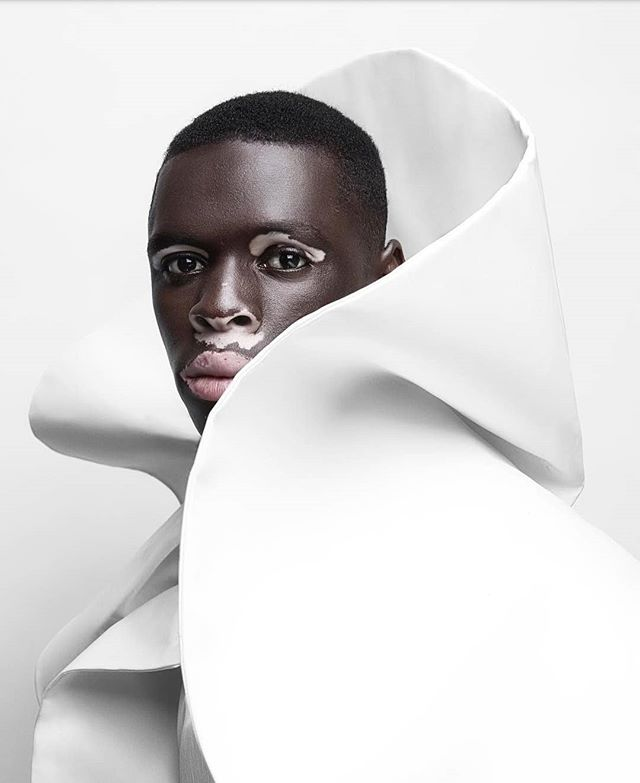
How did you start suffering from vitiligo? Is it something you were born with?
I personally don’t know anyone who was born with it. I developed it with time. It just started with two tiny dots on my lips. I didn’t really pay attention to it. But as time went by, they started to spread out. When this happened, I was uncomfortable of course, because I was strange. Everybody was curious, it wasn’t something “normal”.
I was young, but as time went on, I learned to deal with it. People ask, look at you… This could have bothered me as a kid, but gradually I learned how to deal with this type of comments. Eventually, I found a way to infuse this into my modeling career.
How old were you?
I don’t remember exactly. I was at school and I remember children constantly asking me what those white dots were.
All models have to take care of their skin. As a vitiligo model, do you take extra care?
Yes, I need to take care of my skin, for example, not being exposed to the sun a lot. I do regular skin care, with natural products. I have to look after myself.
Is your skin constantly changing?
It does change. I like to say I’m a chameleon. I cannot assure if I will be fully white or fully black. It moves around. I’m happy with every shape as long as I’m just me.
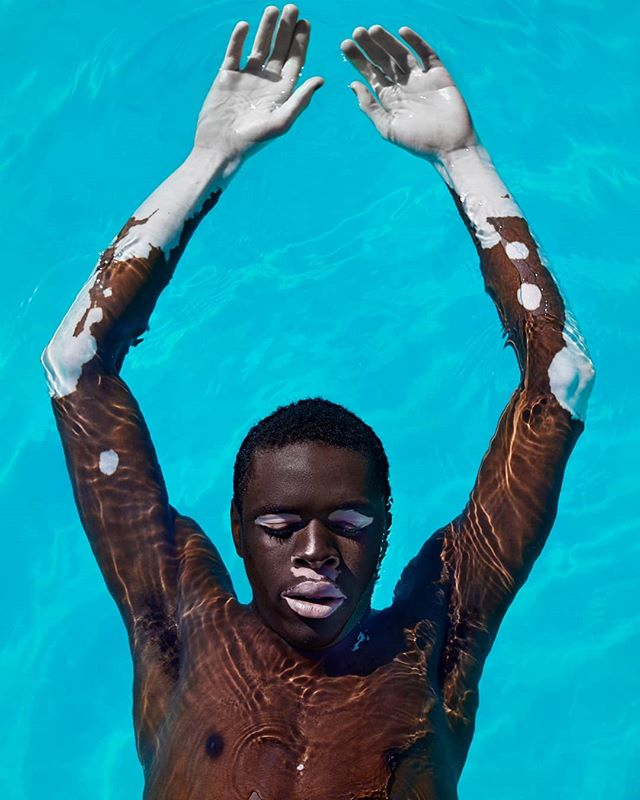
We know that models have to update their polaroids constantly. Do you have to update your polaroids because your skin changes?
Yes. In my modeling agency, we have sessions where we constantly update the polaroids. I try to maintain my skin not exposing it to hard things, like the sun. I’m also constantly applying sunscreen. I protect myself, but I don’t mind if it changes and my modeling agency either.
You explained that vitiligo started when you were very young. Did you feel different or have insecurities back then?
Yes, I did. I always had the same doubts. Am I going to like to someone? How are they going to treat me? Am I ever going to have a girlfriend? I used to wonder this type of things. But as time moved on, I realized it wasn’t as bad as I imagined in my head.
Have you ever felt that you don’t find your place because you’re black and white?
I always tell my friends I’m both races. First of all, I’m African. Number 2, I’m Moostapha. And number 3, I’m black and white.
How did you start your modeling career? Was it because of vitiligo or had you already thought about it?
I’ve always been a person who has maintained himself and has an interest in the industry. I started collaborating with Justin Dingwall, an artist based in South Africa. We created a series of images. These images were about my personal story: wherever I go, everybody looks at me, that’s the meaning behind it. This type of art projects introduced me to the modeling industry and it all started with that. I signed with an agency based in South Africa. From there, I kept working until today.
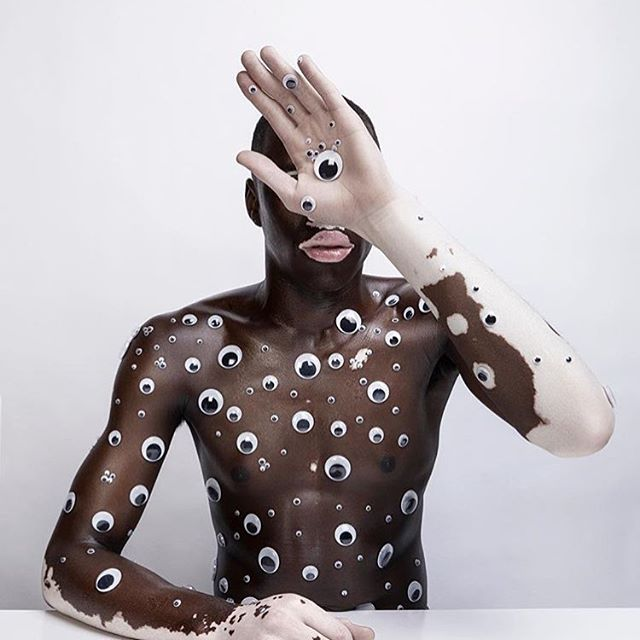
So, in these pictures, you didn’t have any experience? They look very professional!
You know, it’s so crazy. When we did this shooting, it was actually a freestyle. We had no preparation, not even the message. The message was decided once the shooting was done. There was no preconceived idea.
And do you work as a model full-time?
No, I’m a student. I’m studying at the University of South Africa Economics and Management Sciences, I’m a model and try to take every opportunity that takes my way. I cannot say I’m a model part time because I take every single opportunity, but definitely I’m not full time. I’m trying to learn constantly.
What do you think about modeling? Is it a way to give visibility to vitiligo?
For me modeling is about sustainability, about how I sustain this. Modeling is about to give a voice to those ones who can’t speak for themselves, standing for those who have lack of confidence. I bring diversity to modeling with the way I look. For me, modeling is a way of communicating style, tolerance, character. It’s a way of touching society in different ways, it’s a way to educate us for the future. Definitely, for me it’s educational. If you ask me the type of model I am, I wouldn’t know what to say. What I enjoy is collaborating with other artists and create meaningful relationships.
How long have you been modeling?
This is my third year.
Wow, you’ve been modeling only for 3 years?
Yes! I never had a chance before that collaboration with the photographer.
Was vitiligo a problem to access the industry or did it help you to stand out?
I feel different in the industry because all the models I see are tall and slim. But it’s all about what makes you different, about how a company can transmit its values through you. Vitiligo does play a part when brands do really need somebody different and colorful. So yes, it does help me a little in terms of diversity. Every chance I get I take to my advantage that I’m diverse.
We all remember Winnie Harlow, the first famous vitiligo model. Do you think the modeling industry is becoming more diverse?
I think the industry is inclusive, but companies also have interests. If brands can put the same trust in tall people than in a person with vitiligo, that is something great and means that the industry is changing. There’s a lot of decision players.
We know you’ve worked with huge brands such as Fila or the Messi Store. What was it like to work with these brands?
With the Messi’s Store, it was incredible. The contract with my agency ended and I was wondering how I could stay busy and I got in touch with them. One morning I just woke up and they told me they liked my idea. I started jumping up and down. I called my photographer and explained the project and we did it. It was an important moment for me. I had never had this connection with brands since I was represented by an agency. So now, standing by myself and having to work with this big client, I learned a lot.
The Fila experience was great, I went to a casting and I got selected. It was a good experience, but not as meaningful as with the Messi’s Store since I did all that by myself.
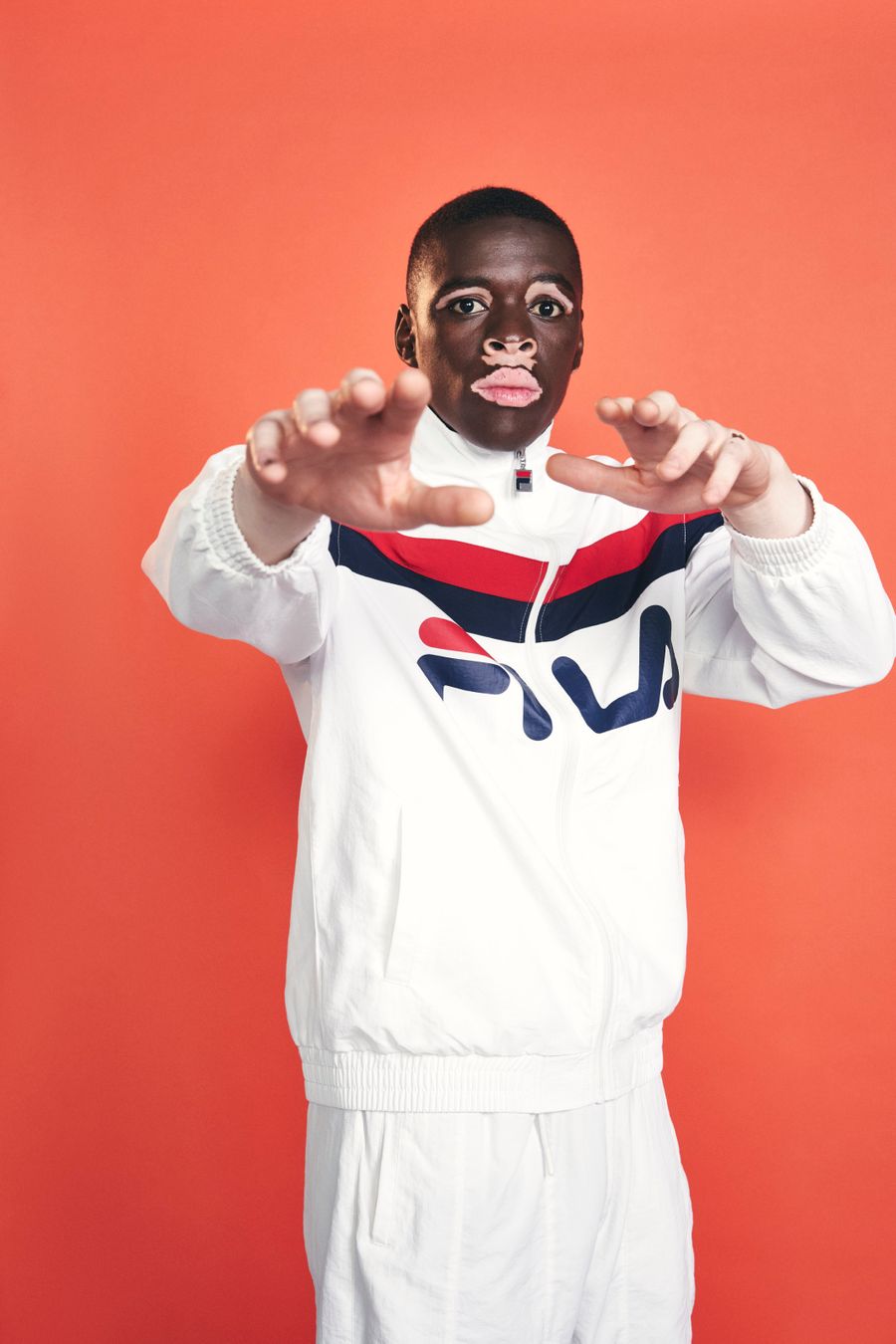
Did these experiences help you to get more visibility?
They are very meaningful for me. It teaches me how to position myself for the next opportunity. And yes, it helps me to get more visibility from brands, or not just brands, but to key individuals of the industry. If you are someone who has the ability to communicate with clients is great to manage your own career.
What would be your next professional achievement?
My next professional goal would be to create my own brand. I want to transfer my skin to products, such as socks, gloves, shoes. I would love it that people who wear them can feel like me. That’s my next professional goal. I’m trying so hard to put myself in one piece of material so you can feel like me.
Do you think that your look makes you special, or is it more about the attitude?
I would like to say that it’s the attitude. Anyone could do what I’m doing, honestly. It’s just about the attitude and the willing to constantly do better. I wouldn’t say my look makes me better, but yes, I’m different and I accept it. I’m not uncomfortable with it, I’m blessed and I’m unique. I’m blessed to be looking like this and to be able to add value to society. But I also work to be consistent and stay busy.
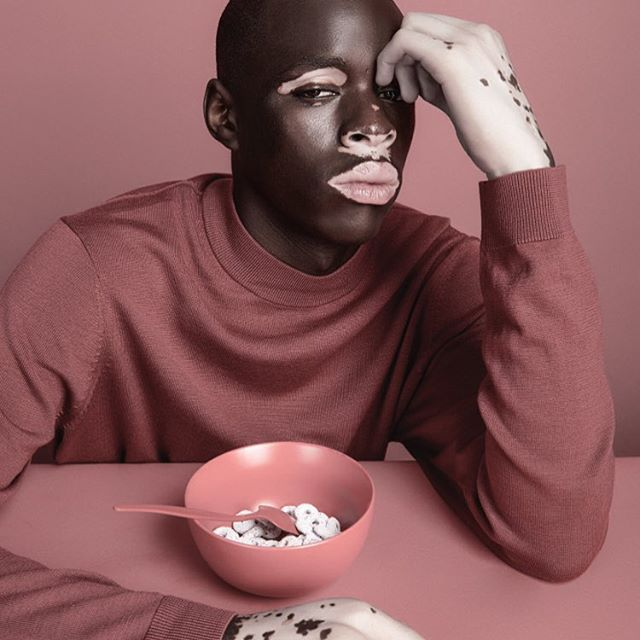
What message would you like to send to those who want to start their modeling careers but feel insecure about themselves?
I would say don’t sit on it. The time is now and the hardest thing is discipline. Honestly, it’s just to assume that there is no better time than now. So, I would rather say, feel free, live your life, learn as much as you want, and be curious. And always have in mind that there are people who are better and others who are worse, so you’re in the middle and this way you’re prepared for any situation.
How do you think ModelManagement.com can help someone’s career?
I think ModelManagement.com has a great advantage for models who are starting because they offer so much information about how the industry works. I remember when I started the Model Academy, it enlightened me and helped me to know how castings work, how agencies work, how models should behave… There are people who don’t have the knowledge, and ModelManagement.com provides the right information so all models know the industry.
I think it’s also interesting the way the Model Academy educates in terms of the types of models there are, beyond the basic runway models. People can actually do different things, and I don’t think people out there understand this. ModelManagement.com educates people in the modeling industry.
I’m grateful for this opportunity. Thank you for this chance to share my story as a vitiligo model, I’m happy to be part of this.

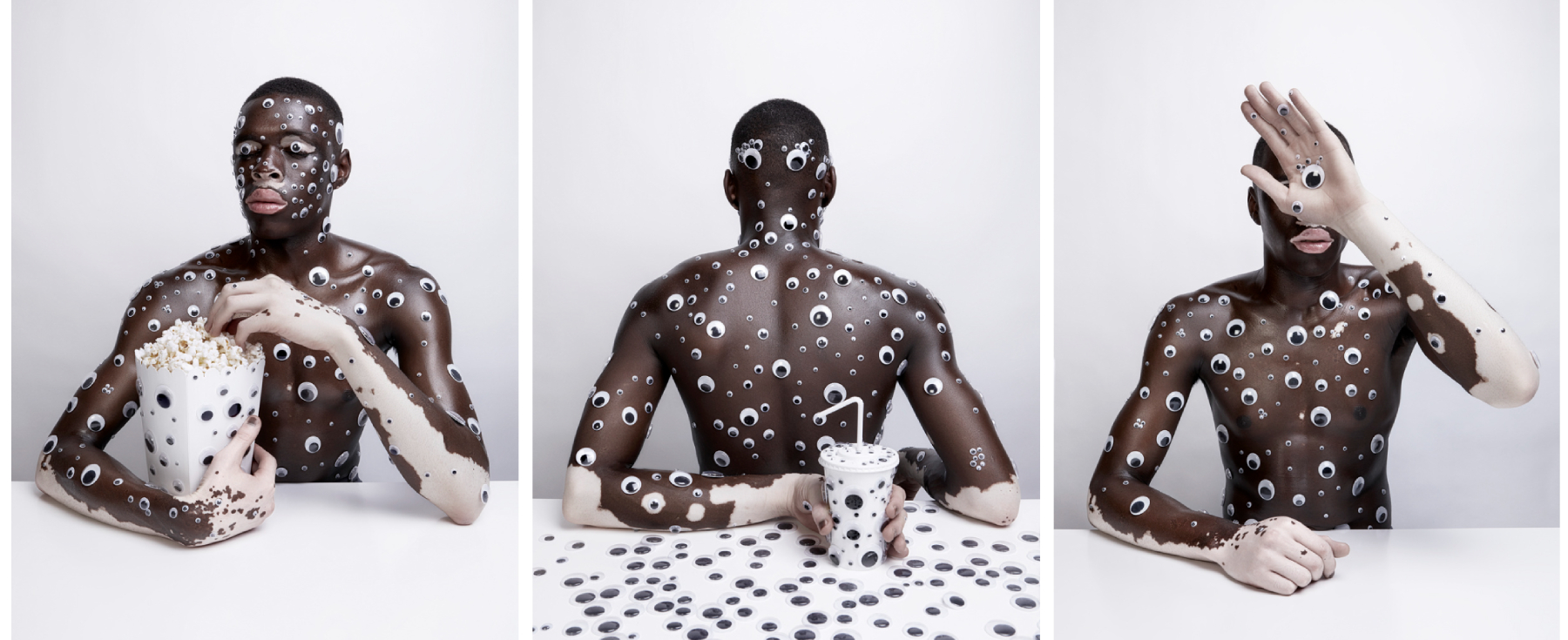



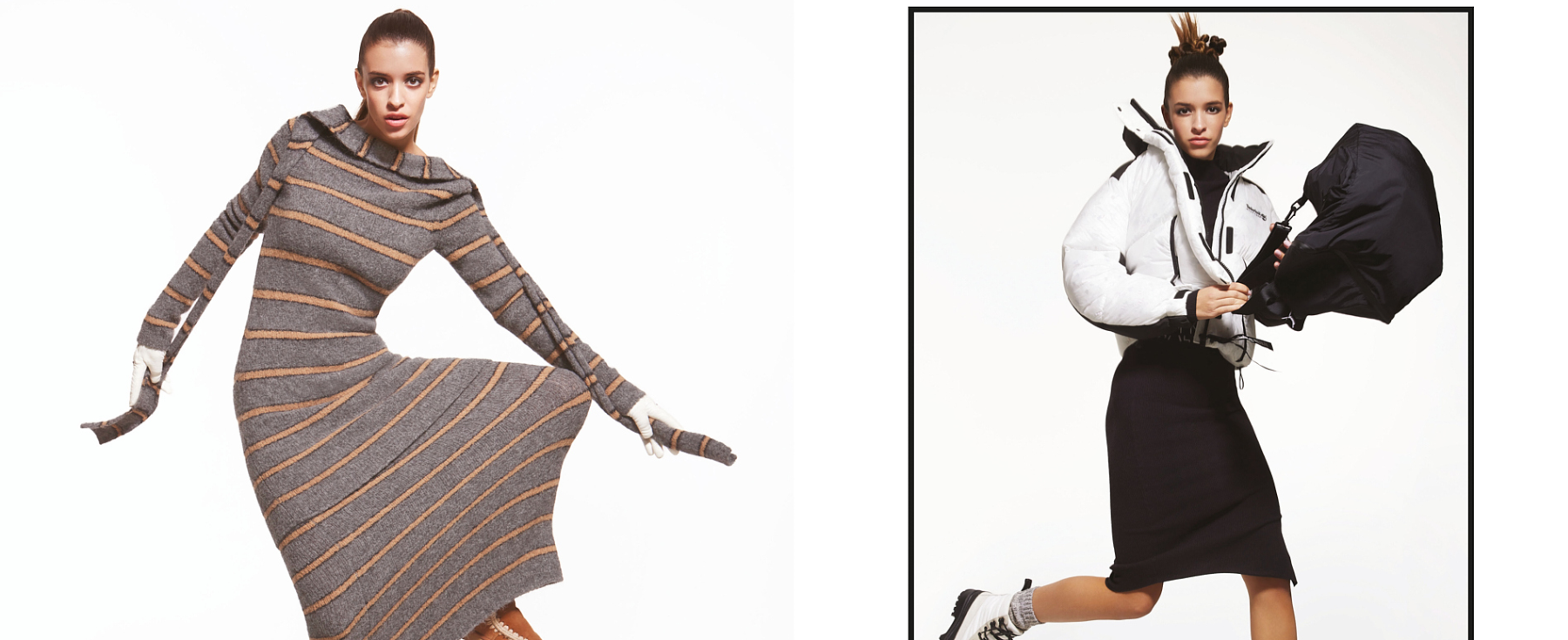
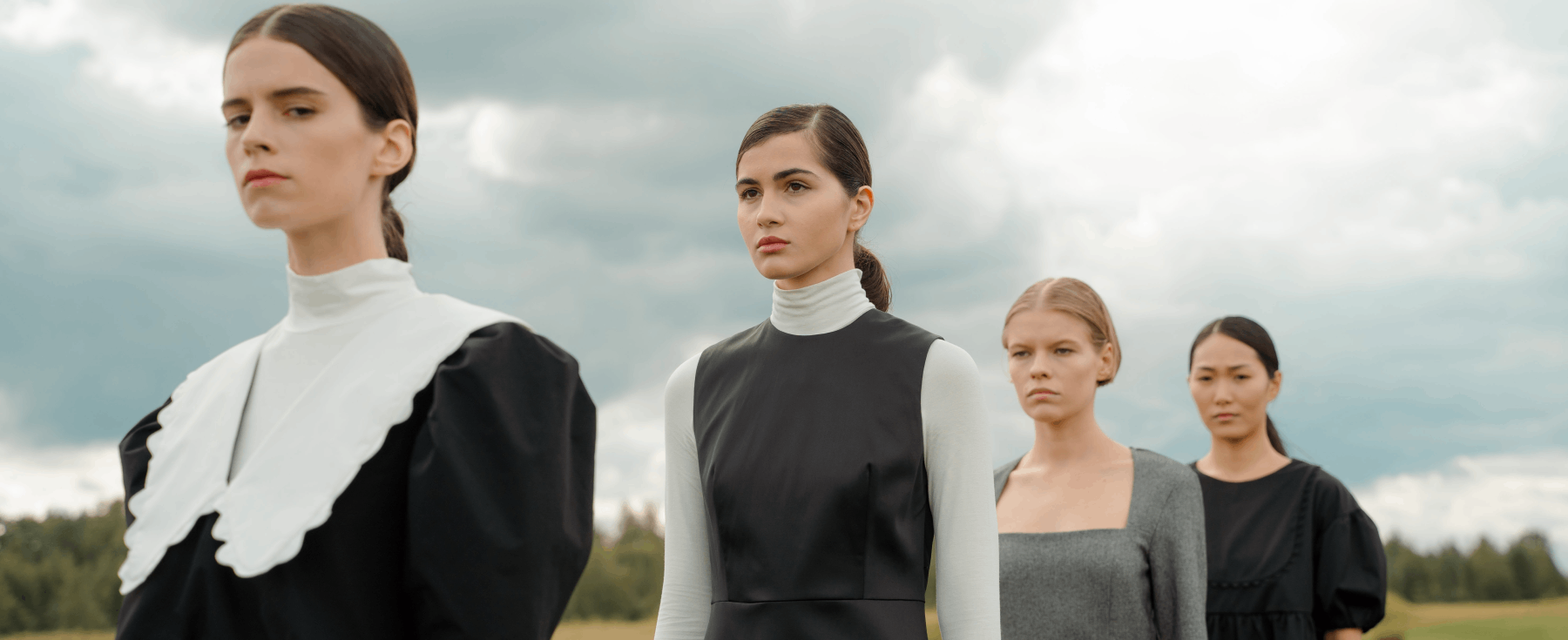
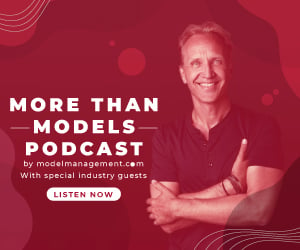
Add comment